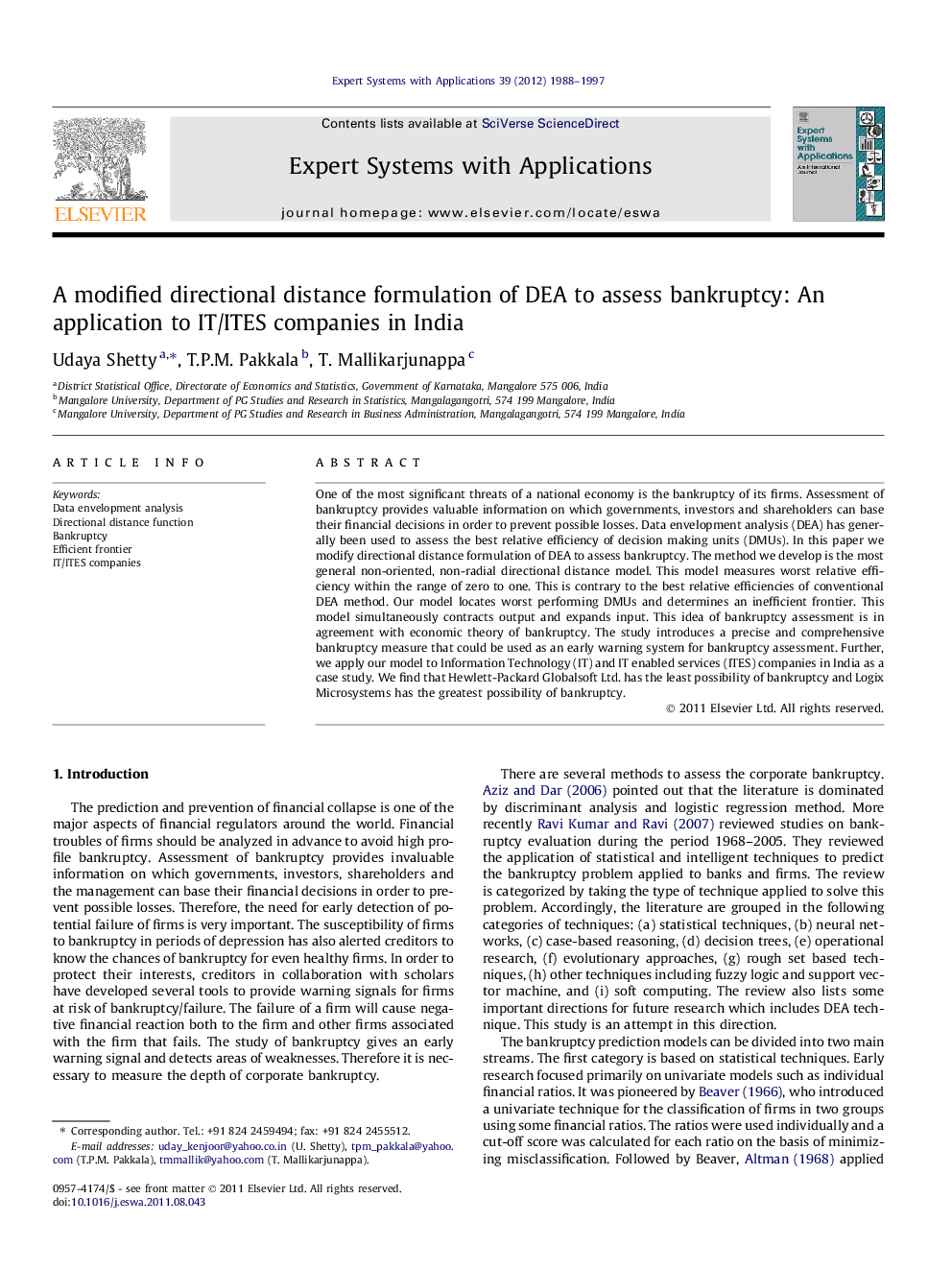| Article ID | Journal | Published Year | Pages | File Type |
|---|---|---|---|---|
| 388098 | Expert Systems with Applications | 1997 | 10 Pages |
One of the most significant threats of a national economy is the bankruptcy of its firms. Assessment of bankruptcy provides valuable information on which governments, investors and shareholders can base their financial decisions in order to prevent possible losses. Data envelopment analysis (DEA) has generally been used to assess the best relative efficiency of decision making units (DMUs). In this paper we modify directional distance formulation of DEA to assess bankruptcy. The method we develop is the most general non-oriented, non-radial directional distance model. This model measures worst relative efficiency within the range of zero to one. This is contrary to the best relative efficiencies of conventional DEA method. Our model locates worst performing DMUs and determines an inefficient frontier. This model simultaneously contracts output and expands input. This idea of bankruptcy assessment is in agreement with economic theory of bankruptcy. The study introduces a precise and comprehensive bankruptcy measure that could be used as an early warning system for bankruptcy assessment. Further, we apply our model to Information Technology (IT) and IT enabled services (ITES) companies in India as a case study. We find that Hewlett-Packard Globalsoft Ltd. has the least possibility of bankruptcy and Logix Microsystems has the greatest possibility of bankruptcy.
► In this paper we modify directional distance formulation of DEA to assess bankruptcy. ► This approach is contrary to the best relative efficiencies of conventional DEA models and directional distance formulation of DEA. ► This idea of bankruptcy assessment is in agreement with economic theory of bankruptcy. ► The model developed in this paper is applied to assess the bankruptcy intensity of selected IT/ITES firms operating in India.
